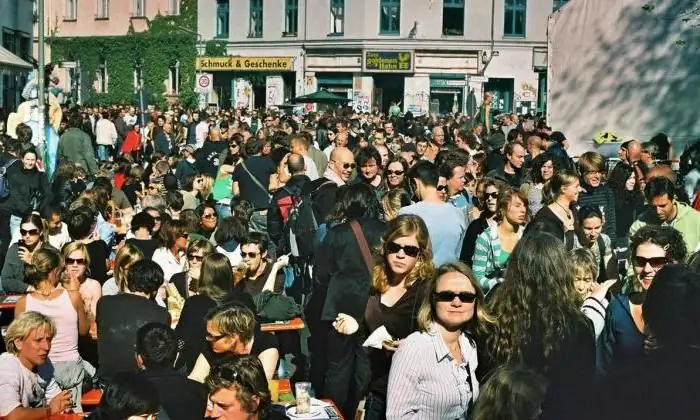- Author Henry Conors [email protected].
- Public 2024-02-12 02:54.
- Last modified 2025-01-23 09:07.
Dushanbe is the capital of Tajikistan, one of the poorest countries in Central Asia in the post-Soviet space. The first written mention of the village of Dushanbe dates back to 1676. The village arose at the crossroads of trade roads, on Mondays a large bazaar (market) was held here, from which the name "Dushanbe" came from, which means "Monday" in Tajik. The population of the city of Dushanbe has been constantly growing in recent decades, after a decline in the nineties.
General information about the city

The city is located in the fertile Gissar valley, from north to south it is crossed by the Varzob river. If we take the entire urban agglomeration with the center in Dushanbe, then more than a million people live here. Dushanbe is the largest city in Tajikistan, where the main industrial enterprises, cultural and scientific institutions, and sports facilities are concentrated. The capital is home to the mainadministrative departments and the residence of the President of Tajikistan. The population of Dushanbe is more than 35.6% of the urban population of the country. The capital of the country is the only city in Tajikistan that has an administrative division.
A Brief History

The city grew out of a large kishlak (village), where there were more than 500 households. Then the population of Dushanbe was about 8,000 people.
In the 19th century, the current capital of the country was a fortress on the banks of the river and was called Dushanbe-Kurgan. The quarters of the city were divided according to national communities and guild affiliation of artisans. The population of Dushanbe then was 10 thousand people. In 1875, the first map was issued, on which Dushanbe was applied.
After the revolution, the city was not long the residence of the last Emir of Bukhara. In 1922, after being liberated by the Red Army, Dushanbe became the capital of Soviet Tajikistan. Since 1924, the city was officially called Dyushambe, and in 1929 it was renamed Stalinabad, in honor of I. V. Stalin. In the same year, the first railway was laid, connecting Dushanbe with Tashkent and the capital of the USSR, Moscow. This gave a significant impetus to the development of industry, including engineering, textile and food. A mass arrival of specialists from Russia began, the population of the city of Dushanbe in these years increased from 5.6 thousand in 1926 to 82.6 thousand in 1939. The historical name of the city was returned in 1961.
Population dynamics

Industrialization and evacuation tocountry population from the central regions of the Soviet Union during the Great Patriotic War caused a significant increase in the population of Dushanbe. The central government paid considerable attention to the economic development of Tajikistan. During this period, a significant number of specialists from other republics were sent to the country. In 1959, the population of Dushanbe was 224.2 thousand people, in 1970 - 357.7 thousand, in 1979 - 499.8 thousand.
The rapid growth of the population also occurred due to the inclusion of nearby rural settlements into the city. In these years (until the mid-1970s), most of the growth occurred at the expense of the population of other Soviet republics, then the share of natural growth increased, a lot of the population began to arrive from other cities and villages of Tajikistan. Before the collapse of the Soviet Union, Dushanbe was the fastest growing republican capital in the Soviet country.
After gaining independence, the country went through a period of civil war and the rise of Tajik nationalism. A mass exodus of the Russian-speaking population, as a rule, the most educated, began from the country.
In the nineties, the population of Dushanbe decreased by 23% of the total population of the capital in 1989 (136.1 thousand people). In connection with the change in the national composition of the population, more men than women began to live in the city again. It is estimated that more than 802,000 residents now live in the city, which is more than 9% of the country's population.
National composition

First available data on ethnic compositionresidents of the city belong to the All-Union census of 1939. Then Russians made up 56.95% of the population of Dushanbe, Tajiks - 12.05%, Uzbeks - 9.02%, large diasporas of Tatars and Ukrainians also lived in the city. Throughout the years of Soviet power, the number of Tajiks was constantly increasing due to the emergence of an increasing number of specialists from among the indigenous population and the annexation of the surrounding rural settlements, where mainly Tajiks lived. After gaining independence, a massive outflow of the Russian-speaking population began and now almost 90% of the population of Dushanbe are Tajiks.






